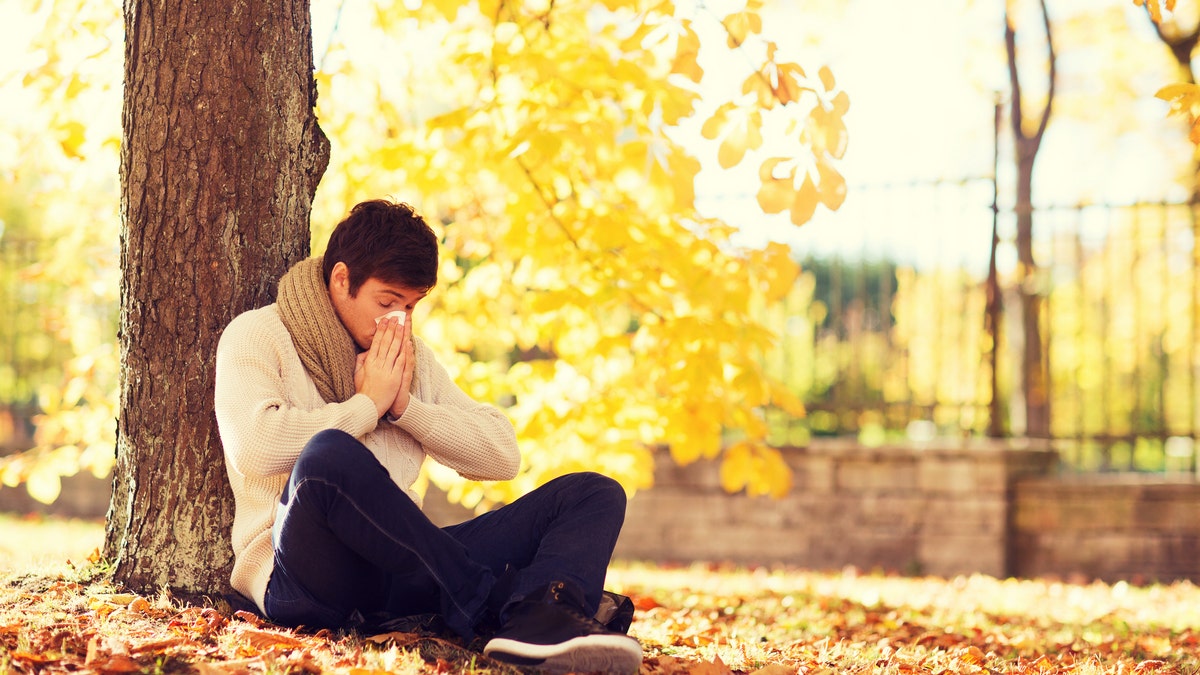Coronavirus and seasonal allergies: How to spot the difference
As kids begin to head back to school, the Centers for Disease Control and Prevention (CDC) has provided some guidelines for parents to help them distinguish between seasonal allergies and COVID-19, which have a number of overlapping symptoms.
Summer is ending and fall is just around the corner, meaning days of cooler weather, vibrantly colored leaves and cozy sweaters are ahead. But the start of fall also means unwanted seasonal allergies, with symptoms sometimes presenting similarly to the novel coronavirus (here’s how to tell the difference between the two).
Read on for a look at what to know about fall allergies and ways to treat them.
CORONAVIRUS SYMPTOMS VS. ALLERGIES: HOW TO KNOW THE DIFFERENCE AS SCHOOL YEAR BEGINS
Common fall allergies to be wary of
Beware of ragweed, mold spores and dust mites in the fall, one expert advised.
“At this time of year, the predominant pollen in the air is ragweed and many people are suffering from nasal and ocular symptoms, including sneezing, congestion, runny nose and red, watery itchy eyes. Ragweed plants will continue to pollinate until the first frost, which usually occurs in October,” Dr. Susan Schuval, chief of the Division of Pediatric Allergy/Immunology at Stony Brook Children's Hospital in New York, told Fox News in an email.
But ragweed isn’t the only allergen to worry about, as fall “is also the time of year when mold spores are in the air,” she said.
“This can be a problem when the leaves accumulate on the ground or on dry windy days,” said Schuval.

“Most COVID infections do not present with significant sneezing and itchy eyes. This is another way to differentiate between COVID and allergy symptoms,” one expert told Fox News. (iStock)
Dust mites, too, can cause issues for fall allergy sufferers.
“Although dust mites are found in the house all through the year, people usually become symptomatic when they start spending more time indoors and the heat goes on in the house. Dust mites exposure occurs predominantly in the bedroom. Dust mite-allergic patients are advised to keep stuffed animals off the bed, wash bedding weekly in hot water, keep carpets clean, to avoid over humidification, and to encase pillows in hypoallergenic covers,” she advised.
How are fall allergies different from spring allergies?
“The symptoms remain the same, however, the environmental triggers are different in the spring; common allergens are tree pollen and grass. In the fall, its weeds such as ragweed. Many individuals are allergic to multiple things that can affect them year-round if they stay indoors, [which is] generally dust mites, pet dander, molds and cockroaches,” said Dr. Alfred Iloreta, an otolaryngologist at the Mount Sinai Hospital in New York, to Fox News.
How can I treat fall allergies?
“There are a number of medications to treat environmental allergies. These include antihistamines, nasal sprays and eyedrops,” said Schuval. “Allergy immunotherapy (allergy shots) may be indicated for patients who do not respond to pharmacotherapy. Evaluation by an allergist is always helpful to determine the patient's exact allergic triggers and to individualize therapy.”
What are common allergy symptoms, and how are they similar to or different from those associated with COVID-19?
“In the fall, respiratory viral infections also become more prevalent when children go back to school and people spend time indoors. Patients with viral infections usually have fever along with respiratory symptoms,” said Schuval.
“This fall and winter, COVID-19 infection will also be a concern in people presenting with fever and respiratory symptoms. Although cough and nasal symptoms may be seen in both hay fever and COVID-19 infection, fever, body aches and severity of illness would be more indicative of COVID-19 infection. Evaluation by a physician may be needed to differentiate between the two conditions,” she added.
Iloreta echoed Schuval, warning that muscle aches, fevers and chills are common with COVID-19.
PRELIMINARY STUDY INVESTIGATES HOW CORONAVIRUS PARTICLES MAY TRAVEL IN CLASSROOMS, INDOOR AREAS
“COVID-19 infections are viral infections and will typically present with muscle aches, fevers, chills, and specifically for COVID-19, we are seeing that loss of taste and smell, as well as GI upset such as nausea, diarrhea or vomiting, will present,” Iloreta said, noting these symptoms “are not common symptoms of environmental allergies.”
“Most COVID infections do not present with significant sneezing and itchy eyes. This is another way to differentiate between COVID and allergy symptoms,” he added.

